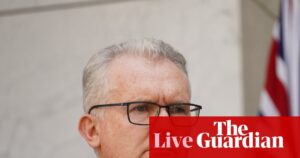
The Australian government has officially introduced content quotas for global streaming platforms, marking a significant shift in the country’s media landscape. The new regulations require major streaming services like Netflix and Prime Video, which have more than one million Australian subscribers, to allocate 10% of their total Australian expenditure—or 7.5% of their revenues—toward local original content. This includes dramas, children’s programming, documentaries, and arts and educational shows.
The legislation, which is set to be introduced into the Australian parliament, is part of the Labor government’s broader Revive cultural policy. This move comes after prolonged delays that left the local industry questioning the government’s commitment to the initiative. Global streaming giants have generally opposed such quotas, arguing that their existing investments in local content and employment negate the need for additional mandates.
Government’s Cultural Policy and Industry Reactions
The announcement of the quotas was made by Minister for the Arts Tony Burke, who emphasized the importance of ensuring Australian stories are represented on streaming platforms. “We have Australian content requirements on free-to-air television and pay television, but until now, there has been no guarantee that we could see our own stories on streaming services,” Burke stated. “This obligation will ensure that those stories—our stories—continue to be made.”
Minister for Communications Anika Wells highlighted the existing contributions of streaming services, mentioning popular Australian shows like “Apple Cider Vinegar,” “The Narrow Road to the Deep North,” and “Boy Swallows Universe.” She noted that the new quotas would ensure such productions remain integral to Australia’s cultural identity.
The Australian Writers Guild (AWG) and Screen Producers Australia (SPA) have both expressed strong support for the quotas. AWG President and showrunner Peter Mattessi remarked on the significance of the policy: “World events move fast and impact our industry in many different ways. Meanwhile, streaming platforms are taking billions of dollars out of the country in subscription fees from Australians—Australians who tell us over and over again that they want to see more Australian content on their screens.”
“It has been a long road to get to this point and after lengthy conversations with government, we are pleased to see our input incorporated into this model, and to see our nation once again require those who deliver screen content to invest in the importance of Australian storytellers telling Australian stories.” — Peter Mattessi, AWG President
Historical Context and Industry Implications
This development follows years of advocacy from local industry groups who have long argued for a more level playing field in the production sector. SPA CEO Matthew Deaner described the announcement as a “landmark day for the Australian screen industry,” recognizing the need for global streamers to contribute fairly to the creation of local stories.
“For too long, our local production sector has operated in an uneven environment where global streaming services could reap the benefits of doing business in Australia without contributing fairly to the creation of Australian stories. Today’s commitment from the Albanese Government is the result of years of advocacy. It recognizes that Australian stories matter, and that they deserve to be seen and heard on every platform.” — Matthew Deaner, SPA CEO
The introduction of these quotas is not without precedent. Similar measures have been implemented in other countries to protect and promote local content. For instance, the European Union mandates that streaming services offer at least 30% European content, a policy that has been in place since 2018. The success of such policies in Europe may provide a roadmap for Australia as it seeks to bolster its cultural output.
Looking Ahead: Future Challenges and Opportunities
The move represents a significant opportunity for Australian creators, who stand to benefit from increased investment in local productions. However, it also poses challenges for streaming platforms that must now navigate these new regulatory requirements. The response from global streamers remains to be seen, as they have yet to issue statements regarding the new quotas.
As Australia moves forward with this legislation, the focus will likely shift towards implementation and monitoring to ensure compliance. The government will need to work closely with industry stakeholders to address any potential issues that arise and to maximize the benefits of the quotas for Australian audiences and creators alike.
The introduction of content quotas marks a pivotal moment for Australia’s media industry, promising to reshape the landscape of streaming content and reinforce the country’s cultural identity on a global stage. As the legislation progresses through parliament, all eyes will be on the next steps and the broader implications for both local creators and international streaming giants.





